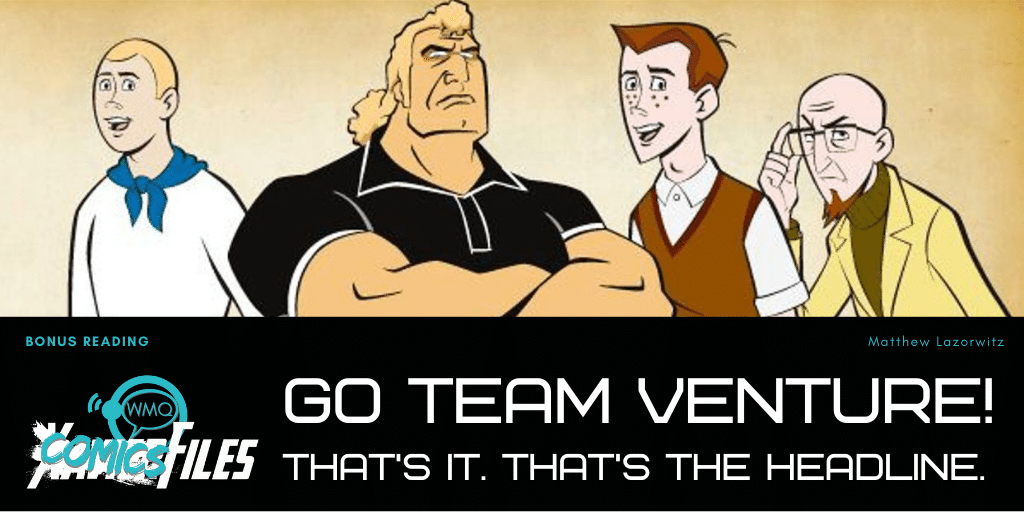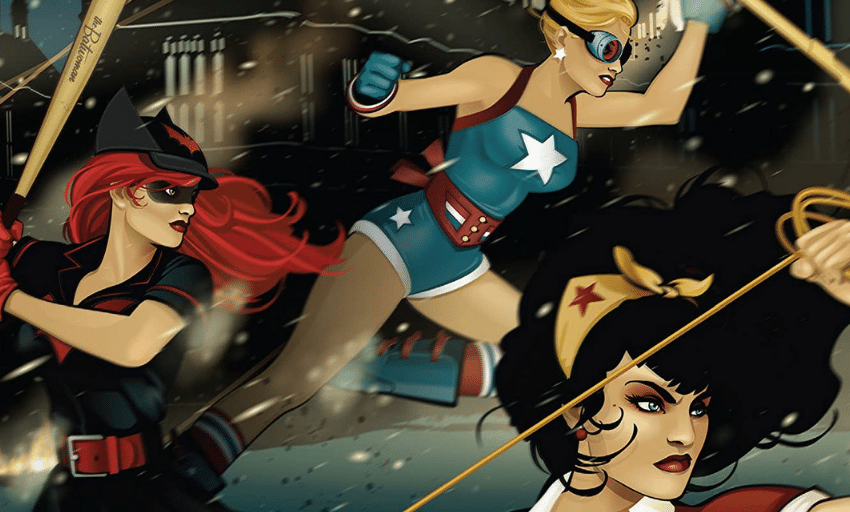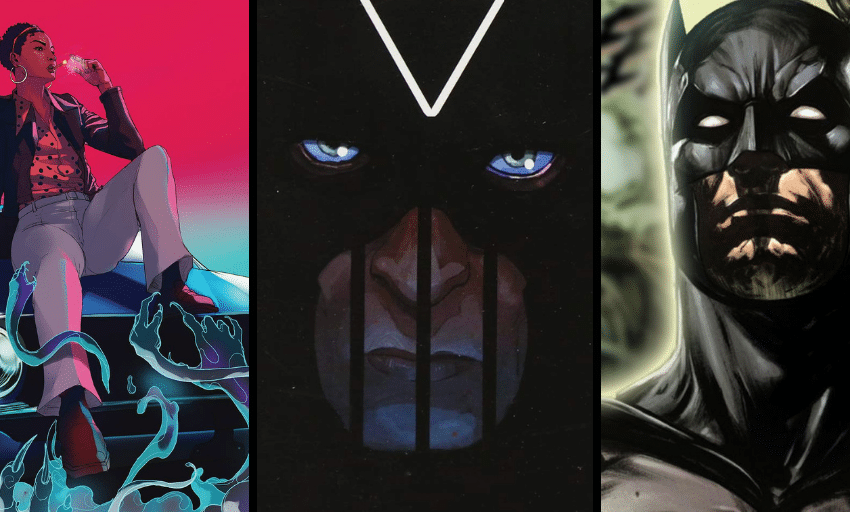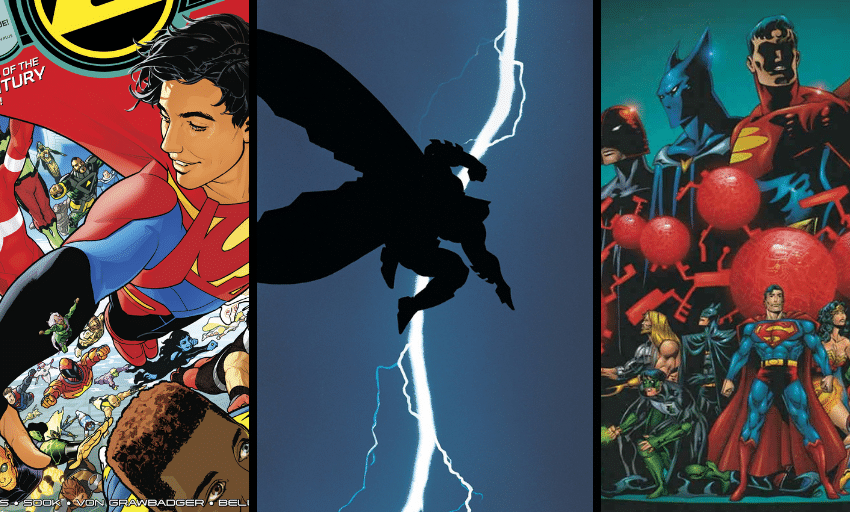It’s been a roller coaster of a week for fans of the long-running Adult Swim animated series “The Venture Bros.” Series co-creator Jackson Publick revealed on Twitter Monday that the series had been canceled after seven seasons with scripts for season eight already in progress. Quickly, fans rose up, and just as quickly Cartoon Network said it was hoping to find a way to continue the show, and HBO Max said it might consider adding it to its lineup.
For those out there who haven’t watched “The Venture Bros.,” the series was created by Publick and Doc Hammer and started airing in 2003. What began as a parody of “Johnny Quest,” about what the grown-up son of a science adventurer (Doc “Rusty” Venture) would turn into and what he would do to his own kids (Hank and Dean Venture, the titular Venture Bros.), as well as the adventures of their bodyguard (Brock Samson) has expanded into a story about a large cast of strange characters and how they all experience failure, even if in many cases they fail upward.
While an animation parody to start, the show has all manner of comic book aspects baked into its DNA. Publick, a pseudonym for writer Christopher McCullough, wrote an early spin-off miniseries for Ben Edlund’s legendary superhero parody, The Tick, named “The Tick: Karma Tornado.” He would go on to be a staff writer and storyboard artist for The Tick animated series. And the love of the creators for comic book characters is evident as you watch the series and see the number of characters who are thinly to barely veiled parodies or pastiches of comic book characters. So this week, we’re going to look at four of the best Venture Bros. characters and episodes based on comic books.
The Order of the Triad

One of the first major supporting characters introduced outside the original five characters and their primary rogues was Doctor Orpheus, a necromancer who took up residence at the Venture Compound to help pay the bills, because Doc is not good with money. HIs flowing robes and somewhat pompous attitude make it pretty clear out of the gate that Orpheus is a parody of Doctor Strange. He even has an otherworldly mentor whom he visits in a mystical dimension he hides the entry to in his daughter’s closet.
But the parody gets even deeper when Orpheus summons his mystical team, the Order of the Triad. The Alchemist isn’t a direct parody of any one character that I can find. He wears monk’s robes, is out and proud, and has nebulous mystical powers; there might be a little Doctor Druid mixed into the character, as Druid also wore robes and had a similar balding hair style, but those are also traditional monk signifiers, so it might just be that.
The final member of the Order is Jefferson Twilight, Blacula hunter; not African-American vampire hunter, because he’ll hunt Blaculas from any country. Jefferson is a not even thinly veiled take on Blade. He dresses like Blade from his earliest appearances, and uses the blaxploitation aspects of the character from his earlier appearances, not the ’90s “Nighstalkers”/Wesley Snipes take.
The Order of the Triad has popped up throughout the series to face mystical threats of varied power, and while they are friends, there is often some sniping going on between them. There’s a definite Defenders vibe, as Orpheus will summon them, they will try to be a team for a while, and then go their separate ways for personality reasons until they are needed again.
Professor Impossible and His Family

If you’re a comic book fan who has looked at Reed Richards and thought, “Man, that guy is a complete dick,” then you will either feel validated by, or complete hatred for, Professor Impossible. Richard Impossible has all of Reed’s worst traits — his egotism, his obsession with science at the cost of everything else — and none of the redeeming qualities, like the genuine love Reed feels for his wife and family. He can stretch like Mr. Fantastic, but he is the only one whose power is not a terrifying reimagining of the FF’s power sets.
The remainder of the Impossible family are each given a twisted version of the powers of the Fantastic Four. Sally Impossible’s skin can turn invisible, but not her organs, so she turns into a living version of those “visible man” model kits. Her brother, Cody, bursts into flame whenever exposed to oxygen, and feels tremendous pain when he does. And their cousin Ned, who is sweet, nonviolent and none too bright, is covered in nearly impenetrable calloused skin.
Sally Impossible does what Sue Richards never does, and leaves her emotionally distant husband, which sets Professor Impossible down a dark path. We have an evil Reed Richards in the Marvel Universe in the Maker, but Professor Incorrigible is a more interesting take on that concept. His spiral after losing Sally has nothing to do with loving her, but is instead a product of paranoia and jealousy. He joins with a group of other villains, including major threat Phantom Limb, as part of the Revenge Society. Sally goes on to live with Doc Venture’s brother, Jonas Jr., a super scientist with better work-life balance skills, if just barely. It’s a weird and warped take on the Fantastic Four that you won’t find anywhere else.
Captain Sunshine

Captain Sunshine is a character who treads the fine line between hilarious and uncomfortable in the way “The Venture Bros.” pulls off often and beautifully. A solar-powered hero of world renown who is rich and lives in a mansion, is a TV news anchor and takes in sidekicks he has a bad habit of losing, it’s easy to see that he combines aspects of both Superman and Batman. He was Wonder Boy, sidekick to the original Captain Sunshine, and now he has adopted the identity of his mentor.
The thing about Captain Sunshine is that he… doesn’t seem to understand the proper bounds between hero and sidekick. This plays on those old Batman stories that are now memed to death, and were the source of Frederick Wertham’s discomfort in “Seduction of the Innocent.” These jokes could easily go down the way of the creepy old pederast jokes on “Family Guy,” where it’s just plain uncomfortable and takes the piss out of a serious issue. But by making it clear that Captain Sunshine is not actually interested in his sidekick romantically or sexually, and just doesn’t know what is appropriate, the creators get to play with the old tropes and call out those old Golden Age stories while not actually making your skin crawl. The fact that Sunshine is voiced by legendary Batman voice actor Kevin Conroy adds to the comparisons and means you get a great, hilariously tortured performance each time.
But there’s a much deeper comic book reference in Captain Sunshine’s superhero team, The Super Gang. Daylighting as the members of his news team, the Super Gang is made up of mostly analogs of DC’s Freedom Fighters. Sports reporter U.S. Steel is Uncle Sam, fellow sports reporter Brown Thrasher is Black Condor and weather robot Ghost Robot looks like the Human Bomb, and has a desire to be human similar to Marvel’s Vision. The final member, Barbie-Q, is a little harder to find an exact analog for, but her fiery design has a Human Torch or Green Flame vibe, so not a Freedom Fighter, but still a comic character. If we’re looking at Freedom Fighters, that would actually also allow Captain Sunshine to be The Ray, another solar-based hero.
‘Twenty Years to Midnight‘

So, you’ve read the first three entries, and now you’re curious about “The Venture Bros.” Where should I start, you wonder? Well, it’s only seven seasons with between 15 and nine episodes, counting specials. Start from the beginning! But if you want to get a feeling for the show, and want something with a comic book feel, you can’t go wrong with season two, episode five, “Twenty Years to Midnight.”
The episode is an extended fetch quest, where the main cast, along with some of their allies, must find the pieces of Doc’s father’s greatest invention and activate it by midnight the next night. Throughout the episode, they are observed by the Grand Galactic Inquisitor, an alien with a decidedly Jack Kirby design who is there only to observe. Yes, he’s sort of the Watcher, only anytime anyone interacts with him, he shouts, “IGNORE ME!”
The episode is a perfect stand-alone piece, with the viewer not needing to know anything going in, and it ending with the story of the device and the Grand Inquisitor wrapped up. You also see each of the principle cast being hilarious and giving the viewer a solid idea of who each of them are, appearances by Jonas Jr., the Impossibles and Action Johnny (an even more on-the-nose Johnny Quest parody who was introduced as Doc Venture became a fuller character, and Jonas Sr. became more Doc Savage than Benton Quest), and a plot that is so surreal and hilarious it only would work in the world of “The Venture Bros.”

Matt Lazorwitz read his first comic at the age of five. It was Who's Who in the DC Universe #2, featuring characters whose names begin with B, which explains so much about his Batman obsession. He writes about comics he loves, and co-hosts the creator interview podcast WMQ&A with Dan Grote.






